Snails inspire
The British Library St Pancras building is entangled in a network of fellow-creatures. It’s hard to draw the line where the building starts and wildlife stops.
27 October 2025The British Library St Pancras building is entangled in a network of fellow-creatures. It’s hard to draw the line where the building starts and wildlife stops.
27 October 2025Blog series Science
Author Andrea Deri, Cataloguer
On rainy days fossilised mollusc spires become apparent in the white Hauteville limestone tiles of the Piazza, as you can see in the left image [1]. The marine snails in those spires lived in the warm seas of the Cretaceous Period, 145-66 million years ago, when dinosaurs roamed the land. In addition to fossils, recent live land snails are also more noticeable on wet days as they are sliding along, as you can see in the right image.
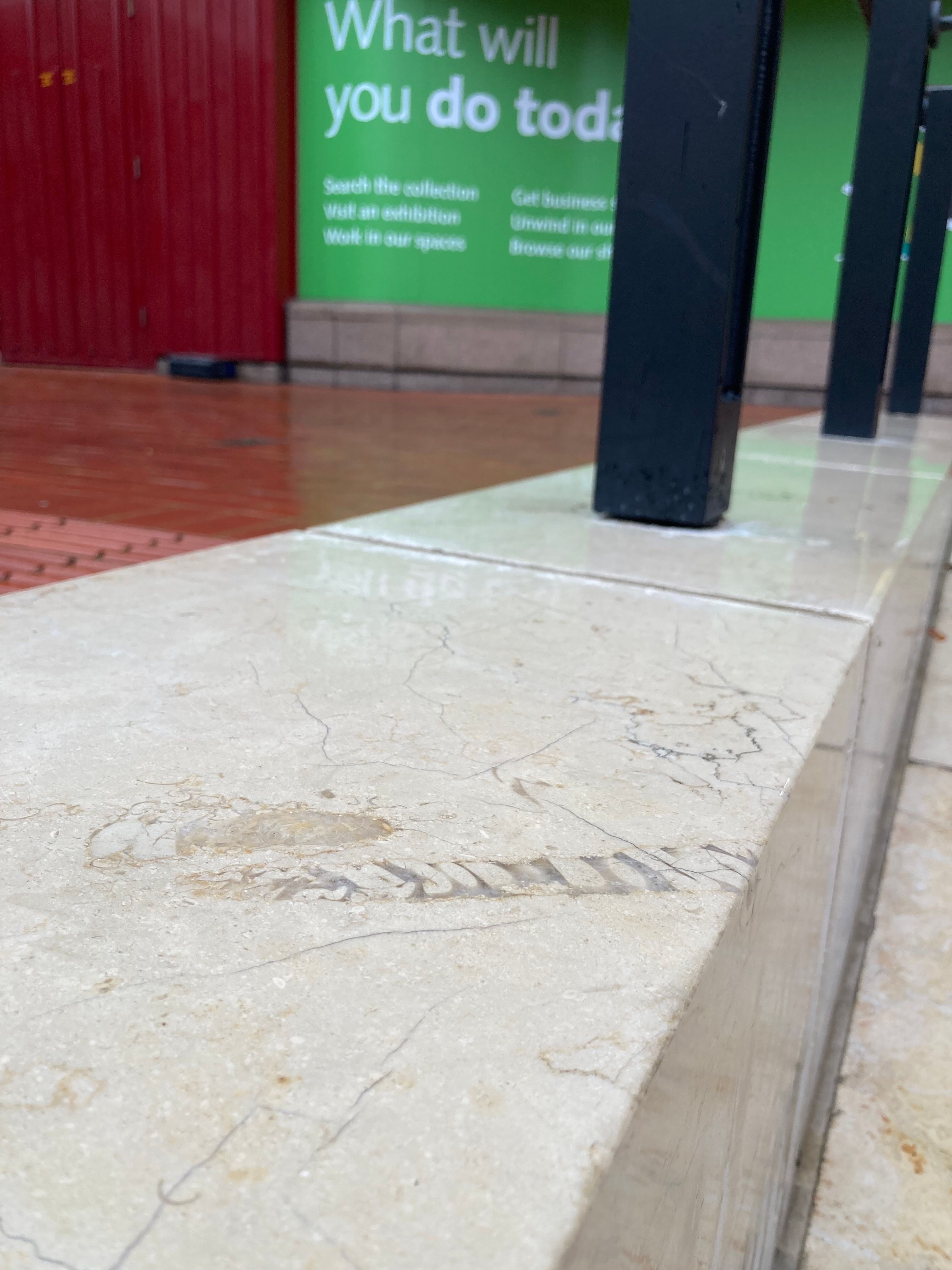
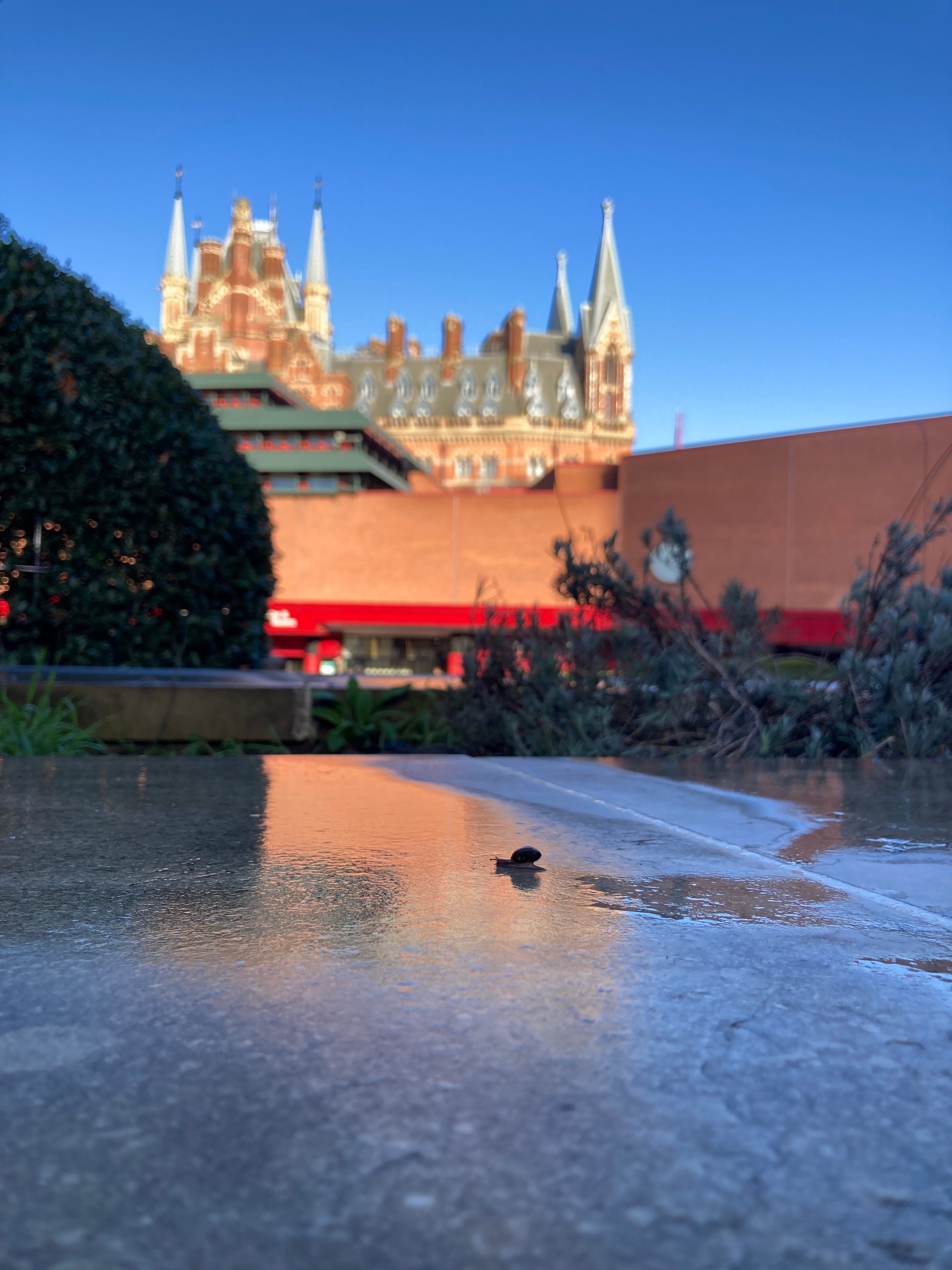
Land snails play an important role in soil formation by contributing to nutrient cycling. Due to their slow movement and dispersal potential land snails are considered useful indicators of ecosystem disturbances [2].
Snails feature in many collection items of the British Library. One of them is a Latin opus, the Historiae Conchyliorum, the natural history of shells, published in 1685, a foundational resource of conchology, the study of shells. [3].
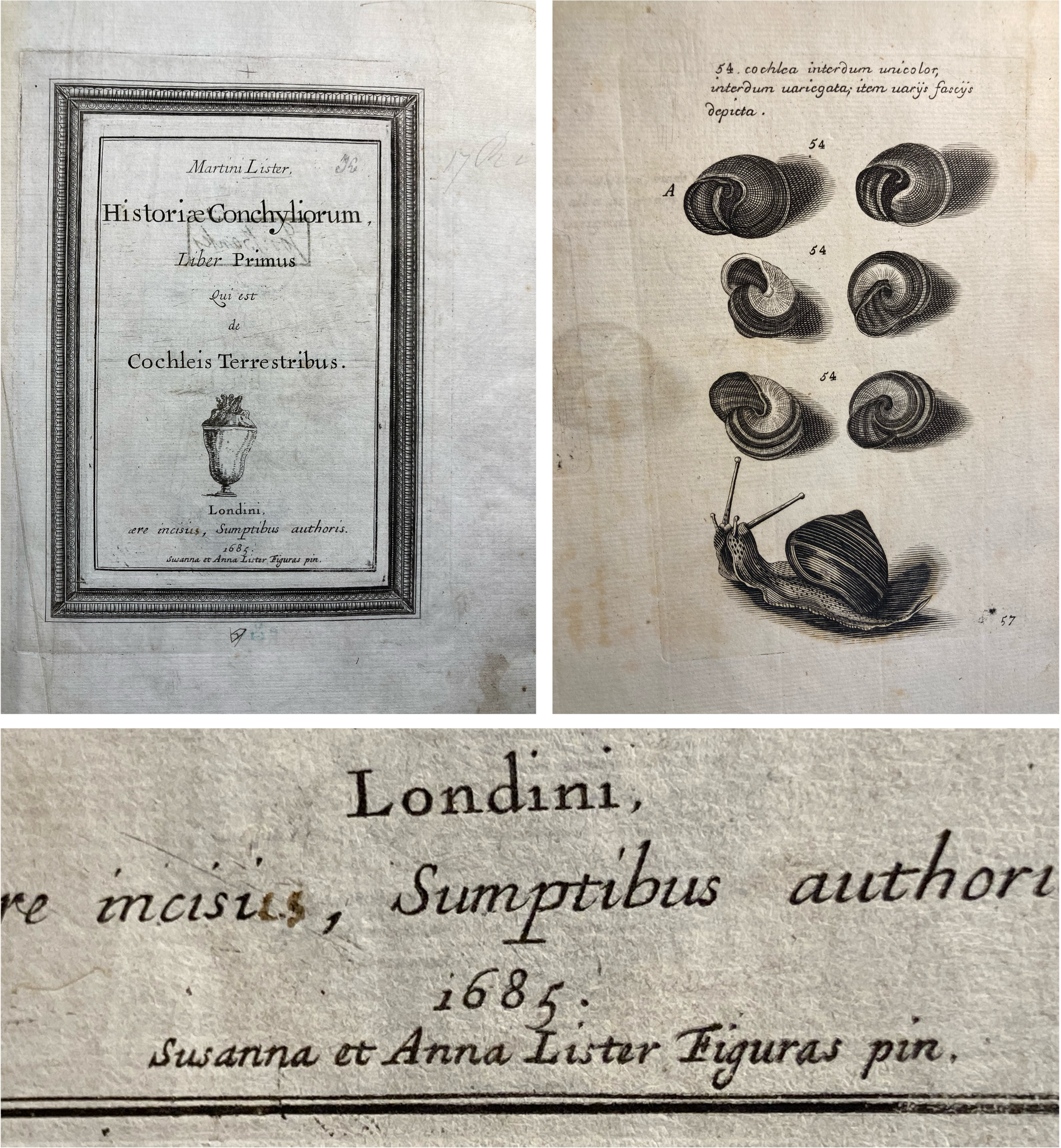
The author, Dr. Martin Lister (1639-1712), Fellow of the Royal Society and physician to Queen Anne, was one of the first snail and spider experts in England.
Dr. Lister was also a dedicated teacher. He mentored his talented daughters, Susanne Listers (1670–1738) and Anne Lister (ca. 1671–1704), to become the illustrators of the Historiae Conchyliorum in their mid-teens. The process of creating their illustrations is a fine example of engaging art as research.
The Lister sisters’ artwork is remarkable not only for their young age. Dr. Anna Marie Roos, science historian, considers the Lister sisters as the earliest known women scientific illustrators who used microscope [4].
If the Lister family walked around the Piazza today, they would recognise most land snail species around the British Library at St Pancras, London, with a few exceptions: the Girdled Snail (Hygromia cinctella), its conical shell with a white peripheral keel, would puzzle them.
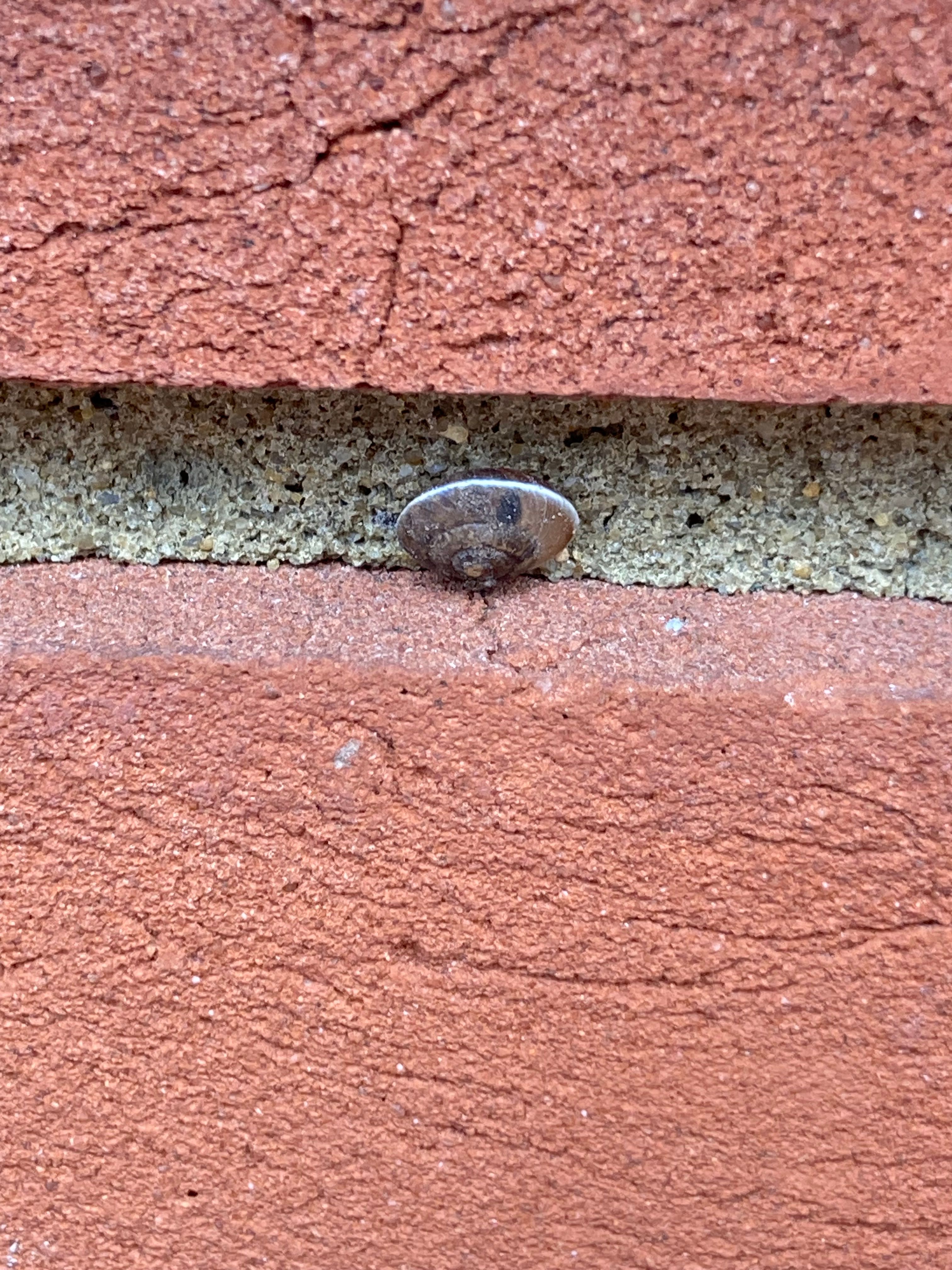
The Girdled Snail (Hygromia cinctella)
No wonder. It is a Mediterranean species, first recorded in Paignton, South Devon in 1950, already ‘in large number’ [5]. Since then, the Girdled Snail’s geographical distribution has expanded all the way to Scotland [6].
The Girdled Snail’s expansion has been documented by both professional malacologists and amateur naturalists. The collaboration of professional and lay experts or citizen scientists in wildlife monitoring significantly contributes to understanding the intertwined climatic and biodiversity changes.
Wildlife monitoring around the British Library’s St Pancras building has documented 12 land snail species so far:
The largest one, up to 4cm, is the wrinkled, mottled Garden Snail, as you can see on the left. The smallest one, less than 2mm, or smaller than half a grain of barley as Dr. Lister described it [7], is the Common Chrysalis Snail, as you can see on the right.
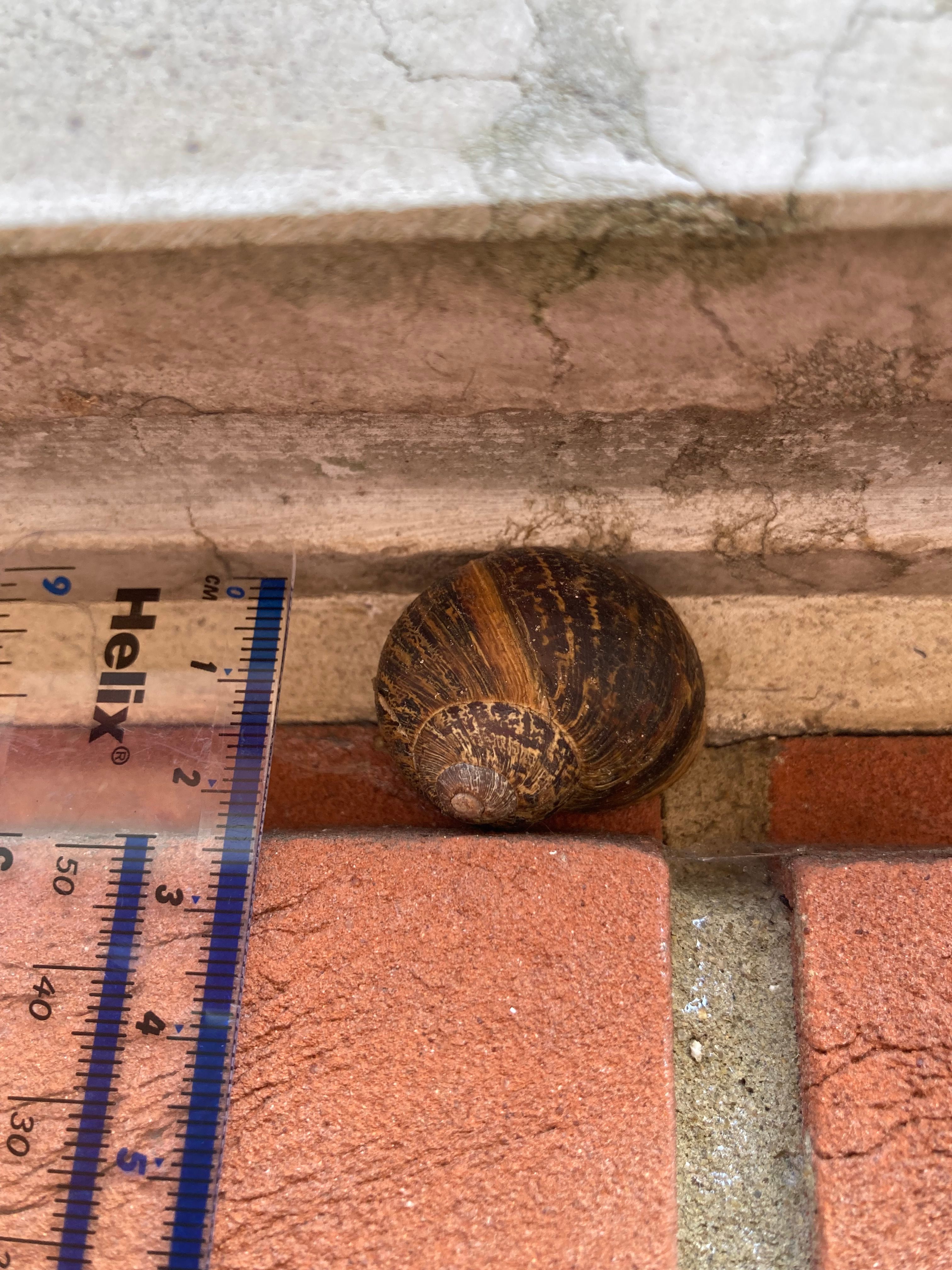
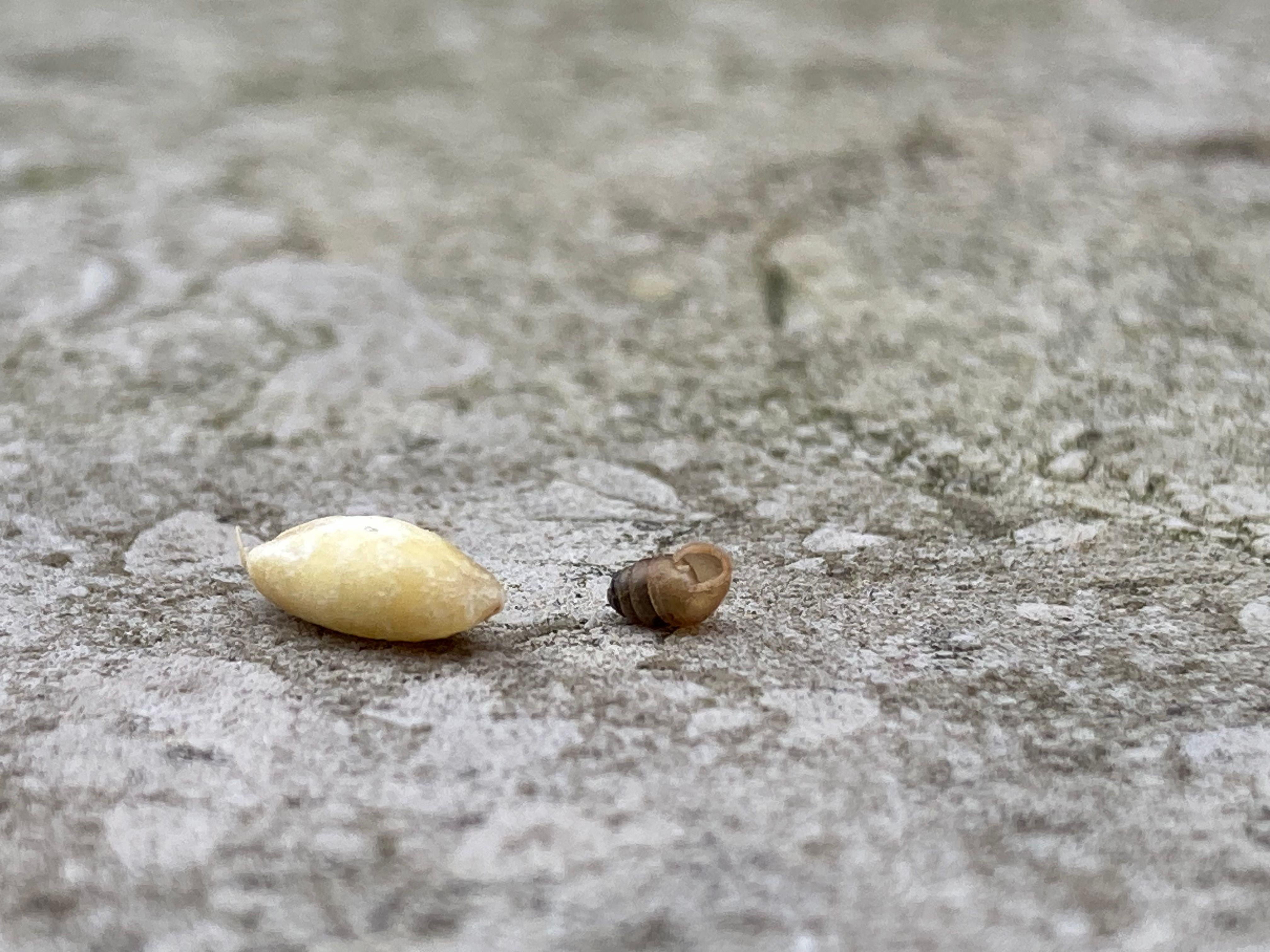
Wildlife monitoring is motivated by the curiosity about biodiversity changes over time. But not only. A cursory look at the stories of the Mollusc World (BL shelfmark: (P) FV 17 -E(5)), the magazine of The Conchological Society reveals what nurtures curiosity is often the sheer joy of encounter, the fascination with our fellow creatures’ antics and aesthetics.
Snails do inspire.
This blog post follows the nomenclature of Dr Roy Anderson and Dr Ben Rowson, 2020:
Anderson, R., Rowson, B., 2020. Annotated list of the non-marine mollusca of Britain and Ireland. Journal of Conchology 38, 607–638.

This blog is part of our Science blog series, written by the science, technology and medicine group of the Research Services team at the British Library. We hope to inform, inspire and surprise you.
Learn about our science resources, services, events, and scientific developments in areas such as environmental and biomedical science, as well as the impact of policy on these areas.
Follow us @ScienceBL

You can access millions of collection items for free. Including books, newspapers, maps, sound recordings, photographs, patents and stamps.